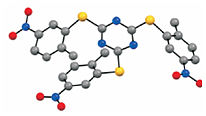Laboratory of Inorganic Synthesis and Bio-Inspired Catalysis (LISBIC) walks along with nature to answer number of long standing questions.
Our primary goals are to understand the structure and functions of organometallic active sites in enzymes such as Carbon Monoxide Dehydrogenase (CODH), Acetyl-Coenzyme A Synthase (ACS), Acireductone Dioxygenase (ARD), Methyl-Coenzyme M Reductase (MCR), Methylenediurease (MDU) and on top of all, Hydrogenase (H2ase), in order to develop simple small molecular models as catalysts for industrially and environmentally important chemical transformations such as
(1) reversible interconversion of carbon dioxide and carbon monoxide,
(2) decomposition of the acetyl group into separate one-carbon units or catalysing acetate synthesis using one-carbon unit precursors,
(3) C-C bond cleavage,
(4) methane generation or activation,
(5) degradation of methyleneurea (slow release fertilizer), and most prominently,
(6) reversible interconversion of dihydrogen into protons and electrons.
SO2 sequestration and activation is one of our branching projects where we are developing molecules with multiple nucleophilic centers to bind with SO2.

Carbon Monoxide Dehydrogenase (CODH)
CO + H2O 2H+ + CO2 + 2e–
Methyl–Coenzyme M Reductase (MCR)
CH3–CoM + CoB–SH CH4 + CoM–S–S–CoB
Hydrogenases (H2ase)
H2 H+ + H– 2H+ + 2e–












